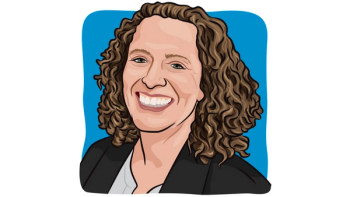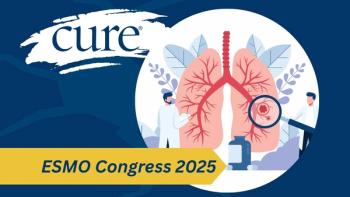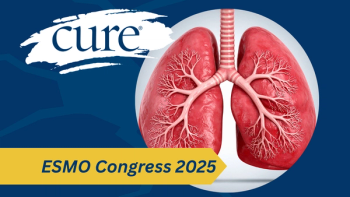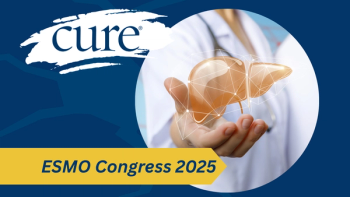
10 Essential Facts About Brain Tumor Awareness Month From a 19-Year Survivor
Key Takeaways
- Brain tumors significantly impact quality of life, with meningiomas and gliomas being the most prevalent types in adults.
- Brain and nervous system cancers represent 1.4% of new U.S. cancer cases, with a median diagnosis age of 58.
Learn about National Brain Tumor Awareness Month, featuring clear brain tumor facts and the need for brain tumor research, from a 19-year brain tumor survivor.
People who have brain tumors often experience unique challenges. In the process, types of brain tumors can impact core dynamics, influencing quality of life, survival, and prevention. National Brain Tumor Awareness Month is a heightened time for brain tumor patients, loved ones, and those working in the field to educate the public about brain tumors, and emphasize the importance of donations for brain tumor research.
As a 19-year brain tumor survivor, with three awake brain surgeries, radiation, chemotherapy and clinical trials, including DCVax-L immunotherapy with a dendritic cell-based vaccine. The journey involves some highs and lows. In my quest for answers, I know how to find information.
My goal is for people to learn from brain tumor facts, with knowledge and aspiration to make a difference. That includes insights and inspiration to fund brain tumor research. As some people already know, time is of the essence.
1. Data shows that brain and other nervous system cancer represents 1.4 percent of all new cancer cases in the United States and #16 on the list of cancer types from the National Cancer Institute.
2. Brain and nervous system cancer is most frequently diagnosed among people aged 55-64, with the median age at 58.
3. Nearly 80,000 new cases of primary brain tumors are expected to be diagnosed in 2017. Approximately a third, or 32 percent, of brain and CNS tumors are malignant. This includes more than 26,000 primary malignant and 53,000 non-malignant brain tumors. Furthermore, there are nearly 700,000 people in the United States living with a primary brain and central nervous system tumor.
4. Pathologists often group brain tumors through grade 1 to 4. Statistics explain that low-grade tumors (grades 1 and 2) grow more slowly than cells from high-grade tumors (grades 3 and 4).
5. The most prevalent brain tumor types in adults are meningiomas (making 36.4 percent of all primary brain tumors) and gliomas (making 80 percent of malignant brain tumors). Gliomas include glioblastoma, ependymomas, astrocytomas and oligodendrogliomas. Yet, more than about 120 different types of brain tumors happen, and many with their own multitude of subtypes.
6. Brain tumor patients are impacted by the type, location, size, molecular markers, tumor behavior, histology, education, age, finances, culture, previous health challenges and other demographics.
7. Brain tumor symptoms can be influenced through many factors. Along with some components listed in #6, symptoms might be caused by tumors pressing on a nerve or harming a part of the brain; when a tumor blocks some of the fluid that flows through and around the brain; or, when the brain swells as a result of the buildup of fluid.
8. The brain tumor’s location can make a strong impact to cognitive functions and functionality overall. More than any other cancer, the complicated reality is that brain tumors can have lasting and life-altering cognitive, physical, and psychological challenges in a patient’s life. Treatments, short and long-term side effects, and ongoing medications can also be involved. Brain locations include the frontal lobe, olfactory bulb, temporal lobe, primary motor cortex, central sulcus, primary somatosensory cortex, parietal lobe, occipital lobe and cerebellum.
9. In 2017, the estimated deaths will be 16,700 people with a primary malignant and central nervous system brain tumor, according to cancer.net. Brain and other nervous system cancer is the tenth leading cause of cancer death in the United States, and highest at 24.5 percent among people aged 65-74, with the median age at 65. Ages 55-64 are at 24.2 percent, compared to people younger than 20 years of age with 3.6 percent who die.
10. More brain tumor research is paramount. Challenges can become opportunities, and adversity into actions. Donate to support brain tumor research.
A tremendous amount of people can make a difference. If a personal donation isn’t possible, instead educate about the disease, ask other people to donate, create events, volunteer, and/or help those in need.
On Sunday, May 7, 2017 in Washington, DC, The Race for Hope — DC celebrated their 20 year anniversary that has raised $29 million for brain tumor research. The event is one of the country’s largest fundraisers for the brain tumor community. For those that want to make a donation for brain tumor research through Accelerate Brain Cancer Cure (ABC2) and National Brain Tumor Society,
Be inspired. Make a difference.
Educate. Advocate. Donate.
Time is of the essence.
Sources:
National Cancer InstituteNational Brain Tumor SocietyAccelerate Brain Cancer CureCentral Brain Tumor Registry of the United States





